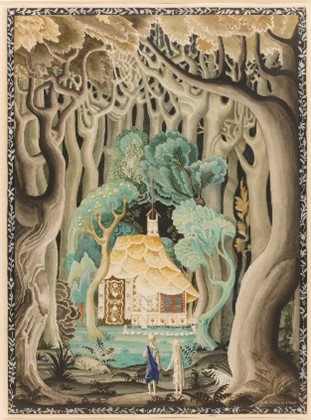
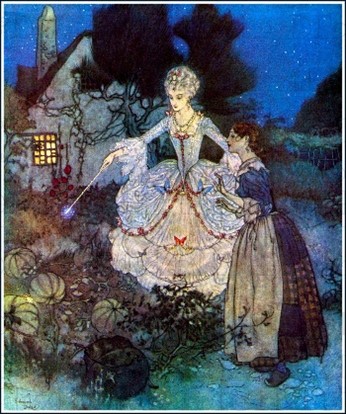

The Australian Fairy Tale Society has launched many projects, events, and products, but the bones of what we do lie within the five fairy tales we explore in depth each year. In the last ten years (due to a few twinned investigations) we have actually looked at closer to sixty stories. For a long time we were content to look at what you might call the ‘Fairy Tale Greatest Hits’ – Hansel & Gretel, Cinderella, Jack & the Beanstalk and so on – but then in 2019 we tackled our first Australian fairy tale and from then on we have settled into a pattern of
One Grimms
One Australian
One well known European (Andersen, Perrault, Arabian Nights etc)
One obscure European
One non-European
which has pushed us to explore the folkloric and literary heritage of many cultures, and continue to re-evaluate what a fairy tale is, and how stories from around the world connect with us. If you want to immerse yourself in the fruits of our research, you can find all the Bibliographies and Points to Ponder for those sixty stories in our Members Only section.

Without doubt, finding and researching the Australian fairy tales is the biggest challenge. There aren’t that many, with the two periods of fruitfulness occurring right now, and in the 1870s to 1920s, when what the writers called fairy tales were usually fairy stories anyway, which have attracted very little scholarly interest until recent years. And let’s not ignore the diprotodon in the room – the horrific Aboriginal misrepresentation, and simultaneous cultural appropriation, that is present in every story from that early period. The hardest of all was the first story we looked at, ‘The Magic Gun’, while the most fun was Snugglepot and Cuddlepie, especially once we saw the sexual meanings underlying the character dynamics.
The final two fairy tales for this financial year include our Aussie tale (usually done over the summer when you should have more reading time) as a rare example of an original Australian fairy tale. Published in 1999, just when Juliet Marillier and Sophie Masson (both now AFTS members) were beginning their internationally-acclaimed work in retelling fairy tales. Winner of the Miles Franklin Award, so you know the writing will be beautiful, the big question will be –
is it really a fairy tale?
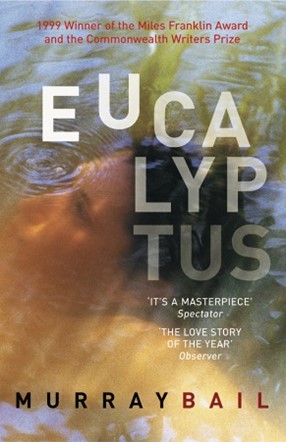

Our April fairy tale, ‘The Stolen Bairn and the Sidhe’, builds on our November ‘Elves’ investigation. It is a Scottish or Irish story of a baby who is taken by the sidhe (faerie) into the underworld and the mother who goes after her child in a quest in the spirit of Orpheus and Eurydice, or Tam Lin. A perfect story to lead up to Mothers’ Day.
Our 2024- 2025 financial year starts in June with another five stories. This year the theme emerges as rather beastly, in contrast to all the brothers, sisters, mothers and fathers we’ve dealt with over the last year.
‘The Ebony Horse’ (Arabian Nights) is a grand adventure, starting with a sultan so obsessed with gadgets that he is lured into handing over his daughter in exchange for a mechanical, flying horse. His son objects, takes the horse, and is swept away to another land and another princess in need. (Aladdin is the only other Arabian Nights story we’ve done so far.)

In contrast, we have the Russian story of ‘The Little Humpbacked Horse’ where Ivan the foolish grants freedom to a remarkable horse and wins instead the little humpbacked horse who helps him face the three impossible tasks set by the Tsar. This is our third Russian story (‘Vasilisa the Fair’, and ‘Tsarevitch Ivan, the Firebird, and the Grey Wolf’) and was made especially popular in Russia by a Pepita ballet.
These are the stories we’ll be exploring leading up to Horses’ Birthday on 1 August.


In September, we have the great Chinese love story (one of the Four Great Chinese Folktales) of ‘Lady White Snake’ where a mortal man and a snake spirit in the form of a beautiful woman, confront life, death, transformation, jealousy, and pills of immortality, so that they can be together.
Snakes again in November (I told you it was a beastly year) with the Grimms’ story of ‘Three Snake Leaves’. As soon as the princess makes a condition of marriage that if she dies, her new husband must be buried with her, you know that marriage isn’t going to equal Happily Ever After for these two. For a while it seems as if this is going to be another tale of deathless love, but a sea journey brings another threat to life, true love, and immortality. Will this be a good Halloween story?
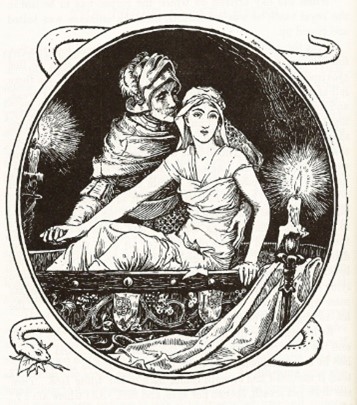
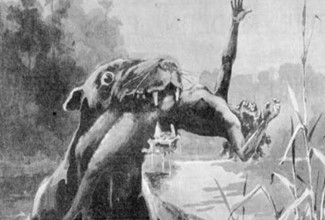
As the Keynote Speaker at our 2016 conference, Into the Bush: Its Beauty and Its Terror, Jackie Kerin led us through many paths following the many traces of the bunyip in the overlapping cultures of our land…and so, at long last, we look at the very simple story of ‘The Bunyip’ as it appears in Andrew (and Nora) Lang’s Brown Fairy Book, as a starting point for all this creature has come to represent.
The tale of ‘Kovlad: The Lost Child’, our first-ever Slavic story (though they are closely related to Russian fairy tales), starts with a much-longed-for child, a taboo that is (of course) broken, and the haunting that follows. Don’t worry! There are three sisters who will try to break
the curse.
Our final story of ‘The Glass Coffin’ by the Grimms might
recall Snow White and Sleeping Beauty, with a beautiful maiden waiting to be liberated from her coffin by love (a gender flip of ‘The Lost Child’), but this one also features a poor tailor lured down into the depths, and a battle
between a stag and a boar.

With every story we investigate we learn more about the language of fairy tales, the meanings that are built into their imagery, and the relationship between written and oral tales around the world. May this coming year bring you ever more stories to appreciate, understand, and be inspired by.
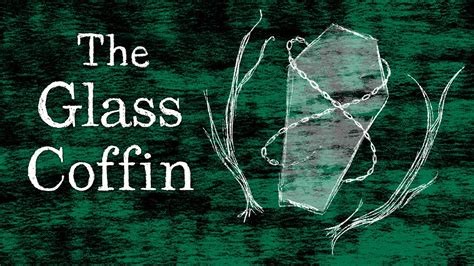
Thanks Jo! Love the diprotodon in the room…and your ongoing zeal and encyclopedic knowledge of fairytales.
LikeLike
Tried to leave a comment but couldn’t. Thanks Jo- great stuff!
LikeLike
Hi Jenni, thanks for your upbeat comment! Just letting you know the website is staffed by volunteers and we only just realised we hadn’t been checking comments lately. It can take up to a week for a comment to be accepted. The restriction is due to the enormous amount of spam that would otherwise appear on the website.
LikeLike
Pingback: Reblog:Fairy Tales to Come – Leanbh Pearson